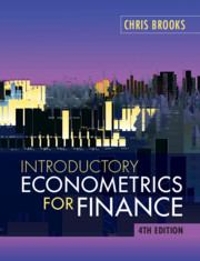
Question I It was March 2000, and Jane, the Chief Investment Officer of Oh My God Partners (OMG) was beginning to lose faith in the value investing philosophy that both she and OMG espoused. The technology stocks in the Nasdaq Composite were soaring to new record heights, while the dull and boring but fundamentally sound companies that OMG invested in were languishing. Jane wondered whether these old economy companies were in fact doomed to die a slow death, and if so whether that would justify the low valuations that the market was giving them. As a test case, she looked at R. R. Donnelley & Sons Company (RRD), the largest commercial printing company in the United States. The commercial printing industry in the United States generated more than $80 billion in annual revenue at that time. RRD claimed to be the first or second in all five of the primary end-markets that they served: Merchandise Media serving the consumer and business-to-business catalog, advertising insert and direct mail markets; Magazine Publishing Services serving the consumer, trade and specialty magazine markets; Telecommunications serving the global directory needs of telecommunications providers; Book Publishing Services serving the trade, children's, religious, professional and educational book markets; and Financial Services serving the global communication needs of the financial markets and mutual fund companies, as well as the banking, insurance and health care industries. Jane collected the following financial data and forecasts for RRD: Market Price per Share 19.38 Shares Outstanding (million) 122.35 Book value per share 9.30 Earnings per share 2000 (forecast) 2.45 Dividend per share 2000 (forecast) 0.88 Her assumptions about the economy and the market were as follows: Risk free rate (Percent) 6.1 Equity Risk Premium (Percent) 4.0 Inflation Rate (Percent) 4.0 RRD Beta 1.0 RRD Growth rate (Percent) 7.0 Use the dividend discount model to answer the following questions showing all workings. 1. Jane thought that her growth assumption for RRD was conservative because RRD had been investing heavily to diversify from print media to the faster growing online media. Under this assumption, what would be the fair price of RRD shares? 2. Consider a pessimistic scenario where RRD's diversification strategy fails and its growth rate collapses to zero after achieving the forecast earnings in 2000. With the abandonment of the diversification attempt, RRD also stops investing (from 2000 onward) as the stagnating printing business does not need any fresh investment. What would be the fair price under this scenario? 3. Jane now considered the worst case scenario where the commercial printing industry becomes obsolete. Her simplistic assumption was that the business would keep running for another 15-20 years as in the previous scenario and would then becomes worthless. What would be the fair price under this scenario? 4. Without the benefit of hindsight, do you think RRD was undervalued in March 2000. Justify your







